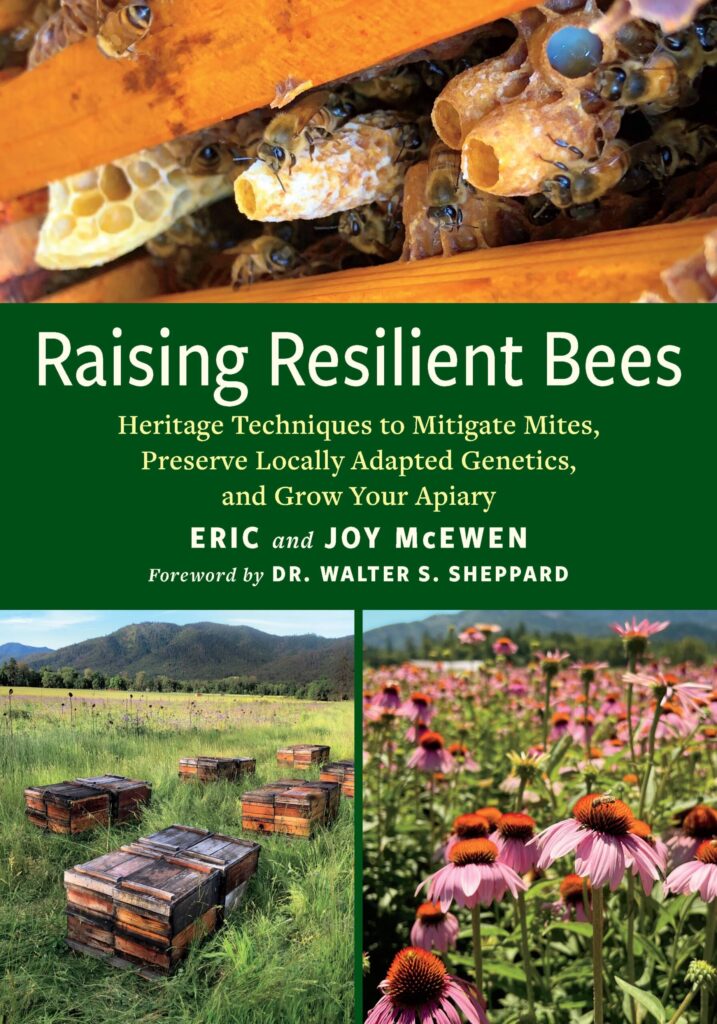In the beekeeping community, where the balance between tradition and innovation is crucial, “Raising Resilient Bees” by Eric and Joy McEwen is a helpful guide for apiarists seeking to navigate the challenges posed by mites and ensure the preservation of locally adapted genetics in honeybee colonies. The McEwens, seasoned beekeepers and advocates for sustainable practices, bring a wealth of practical experience to this comprehensive manual.

and Grow Your Apiary”
By Eric and Joy McEwen
Chelsea Green Publishing, 2023
272 pages, paperback, $34.95
One of the book’s strengths lies in the way it turns complex beekeeping techniques into practical advice. The authors combine scientific knowledge with a hands-on approach, making the book accessible to beekeepers at all skill levels. Readers can choose to take a deep dive into the science of natural queen rearing, varroa mites or even producing value-added products. Though the text is dense, and often reads like a reference guide, the broad range of valuable information is undeniable. This book is especially helpful for beekeepers looking to mitigate the impact of varroa mites, a parasitic mite that attacks and feeds on honeybees and is one of the most damaging pests for honeybees worldwide. The authors discuss a few methods, some which may be new to the reader, including a combination of organic treatments, breaks in the brood cycle, natural cell size and breeding for resistance.
The focus on preserving locally adapted genetics is another distinctive feature of “Raising Resilient Bees.” The McEwens underscore the importance of maintaining the unique traits of regional bee populations, including their overall strength and colony endurance in the face of pests and pathogens. Regional bee populations are often affected by locally raised commercial bees that have been bred for their ability to be handled, lack of propensity towards swarming, and rate of brood rearing. The large number of drones and swarms produced by these commercial operations can greatly impact the genetics of regional bees. By focusing on the preservation of genetic adaptations for resilience, the authors encourage a more sustainable approach to beekeeping that centers the health of each hive.
The authors’ passion for the well-being of bees and the environment shines through in every chapter. The two go beyond the scope of mite mitigation and genetic preservation, delving into the broader context of responsible beekeeping. The book advocates for holistic apiary management, including considerations on forage diversity and habitat preservation. By doing so, the authors highlight the interconnectedness of bees with their environment and the pivotal role beekeepers play in maintaining this delicate balance. Admittedly, there were instances where I felt the authors were confident their management practices were the only acceptable techniques, but I’ve encountered that often when working with other beekeepers: Ask 10 beekeepers for their advice and you’ll receive 10 very different answers.
The book’s practical guidance, grounded in a commitment to sustainable practices, offers an approach to beekeeping that resonates with the growing movement toward environmentally conscious agriculture. The authors’ work serves as a guide to not only safeguarding bee colonies from the challenges of mites but also fostering a harmonious relationship between humans and nature, a goal that I think we all can relate to.
Caitlyn Barker, Dixmont, Maine
